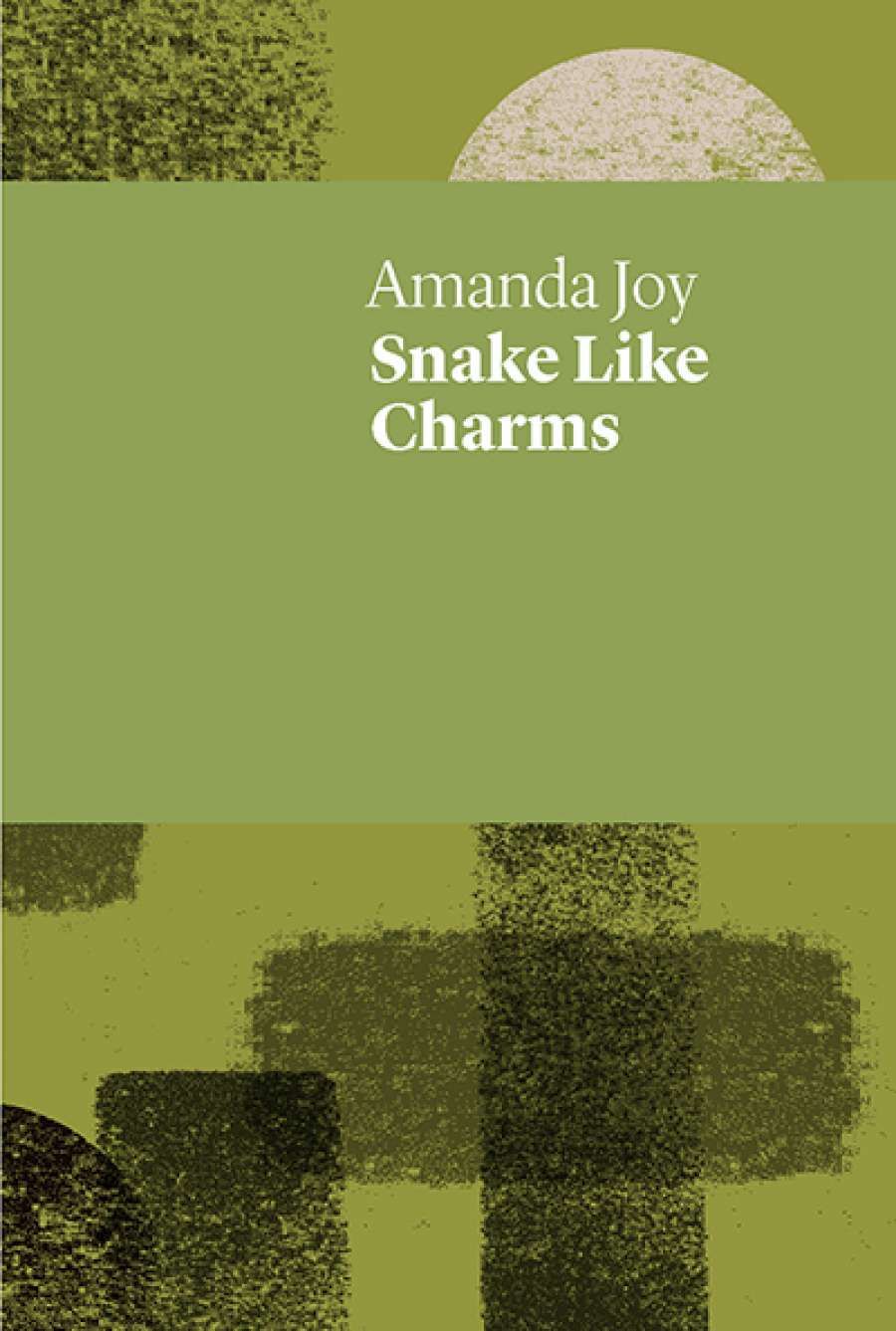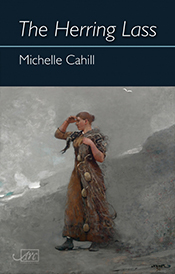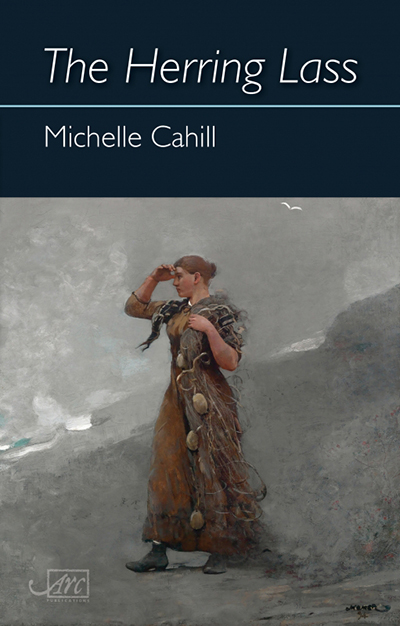
- Free Article: No
- Contents Category: Poetry
- Custom Article Title: Rose Lucas reviews 'Snake Like Charms' by Amanda Joy and 'The Herring Lass' by Michelle Cahill
- Review Article: Yes
- Online Only: No
- Book 1 Title: Snake Like Charms
- Book 1 Biblio: UWA Publising, $22.99 pb, 113 pp, 9781742589404
- Book 2 Title: The Herring Lass
- Book 2 Biblio: Arc Publications, $18 pb, 70 pp, 9781910345764
- Book 2 Cover Small (400 x 600):

- Book 2 Cover (800 x 1200):

- Book 2 Cover Path (no longer required): images/ABR_Online_2017/June_July_2017/The%20Herring%20Lass_400.jpg
Using the trope of the snake, Joy’s work explores aspects of this dislocating strangeness and the ways in which we might both be drawn towards and repelled by the slippery magnificence it represents. In ‘Wading Pool’, the speaker describes the snake in her child’s wading pool – the ‘only one I killed’ – when the fierceness of love is enough to act, ‘Axe in hand’. Most encounters, however, involve a greater sense of respect, even worshipful attention. In ‘Snake Skin, Roe Swamp’, the poem describes both the physical business of a snake shedding its skin – ‘loosen first at the lip, retract / backward over bluing eyes / dull crown, those sorcerous jaws’ – as well as the space which might be shared, literally and figuratively, with the snake: ‘I tease open a brittle end, puzzle / my arm inside, until it is sheathed / to the elbow, ghost eyes puckering / my skin. My pulse, its unsealed centre.’ The snake, as a marker of the strange, is other to the speaking self, who is nevertheless drawn towards it, desirous of becoming snake, of finding the fleeting metamorphic identity of snake/human who can be both world and observer, grounded and ecstatic.
In a series of ekphrastic poems, Joy also plays with the shifting shapes of snakes represented in art and stories. As in ‘Landscape with a Man Killed by a Snake (after Nicolas Poussin)’, the snake is the thing that is hidden, or only partially visible, suggestive of the death that lurks for us, inevitable, in the shadows: ‘Running as if the corpse wasn’t already green / as if the snake hadn’t lain motionless in dark umber / this past four hundred years.’ Yet in ‘Solitude’, one of a series of semi-narrative poems tracing a young girl’s pregnancy, a confrontation with a snake on a moonlit path corresponds both to the subliminal unborn child and to the possibility of release: ‘As I froze I felt a flutter / under my belt and envy / for the snake joining / shadows / The silence of night / its solitary escape.’
Michelle Cahill is a prize-winning writer of poetry and fiction. The Herring Lass, her third full-length collection, demonstrates an assured style and vision. In a range of styles from stanzas, prose poems and couplets, Cahill’s poems are richly evocative of both narrative and place. In the title poem for example, we see, in an almost painterly way, how the Herring Lass’s ‘knife flashes in four-second strokes, her wet hands never stray from a salted barrel’, while also glimpsing her story as her children ‘stray’, and ‘are yet to be fed’. These impulses beyond the lyric and the visual and toward the narrative are sometimes explored using dramatic monologue form, providing us with new and surprising perspectives. In ‘Day of a Seal, 1820’, for example, it is the voice of the hunted seal who speaks of a familiar colonisation: ‘A tall ship patrols the coast / the pelagic fish skirr. / I sniff the kelp and bloodworms, / moulded into an eroded kerb.’ In the longer poem, ‘Youth, by Josephine Jayshree Conrady’, which tells the story of the speaker’s transition from ‘a girl / tripping on the hem of her saree’ to the ‘youth’ who takes to sea, ‘dressed in kurta with kersey breeches’, there is a tension between the linear demands of narrative and the evocation of image or experience. Perhaps this isn’t surprising in a writer who herself moves between poetry and prose.
 Michelle Cahill (photograph by Nicola Bailey)The sequence of poems ‘The Grieving Sonnets’ not only demonstrates an experimentation with this oldest of poetic forms, but also a more lyrical, subjective, and explicitly Australian viewpoint. The sonnets place us, with the speaker, in the specificity of bush, rock wallaby, cave, and river, certainly evoking beauty through imagery and wordplay but also alluding to the complex strands of guilt and loss. Reminiscent of Judith Wright’s ‘Nigger Leap, New England’, Cahill’s poems point to the difficult position of the settler Australian, torn between complicity and grief: ‘I’m not / unkind or ignorant, but I’m here in this mould: / history’s a genocide.’ Shifting between one’s own and another’s story, between the lyrical and the narrative, between what is perceived and what is experienced, this collection is a powerful reminder of our own tenuous position in the ‘killing fields’ of our own history.
Michelle Cahill (photograph by Nicola Bailey)The sequence of poems ‘The Grieving Sonnets’ not only demonstrates an experimentation with this oldest of poetic forms, but also a more lyrical, subjective, and explicitly Australian viewpoint. The sonnets place us, with the speaker, in the specificity of bush, rock wallaby, cave, and river, certainly evoking beauty through imagery and wordplay but also alluding to the complex strands of guilt and loss. Reminiscent of Judith Wright’s ‘Nigger Leap, New England’, Cahill’s poems point to the difficult position of the settler Australian, torn between complicity and grief: ‘I’m not / unkind or ignorant, but I’m here in this mould: / history’s a genocide.’ Shifting between one’s own and another’s story, between the lyrical and the narrative, between what is perceived and what is experienced, this collection is a powerful reminder of our own tenuous position in the ‘killing fields’ of our own history.


Comments powered by CComment